
To include your event in the Briefing and Live Calendar, please fill out this form.
Weather: A slight chance of showers, then a chance of showers and thunderstorms after 2pm. Mostly sunny, with a high near 83. Breezy, with a north wind 14 to 17 mph, with gusts as high as 25 mph. Chance of precipitation is 30%. Wednesday Night: A 40 percent chance of showers and thunderstorms. Partly cloudy, with a low around 71. Breezy, with a northeast wind 13 to 15 mph, with gusts as high as 25 mph.
- Daily weather briefing from the National Weather Service in Jacksonville here.
- Drought conditions here. (What is the Keetch-Byram drought index?).
- Check today’s tides in Daytona Beach (a few minutes off from Flagler Beach) here.
- Tropical cyclone activity here, and even more details here.
Today at a Glance:
The Palm Coast Code Enforcement Board meets at 10 a.m. every first Wednesday of the month at City Hall. For agendas, minutes, and audio access to the meetings, go here. For details about the city’s code enforcement regulations, go here.
The Flagler Beach Parks Ad Hoc Committee meets at 6 p.m. at City Hall, 105 S 2nd St, Flagler Beach. The Committee’s six members, appointed by the City Commission, provide recommendations related to the maintenance of existing parks and equipment and recommendations for new or replacement equipment and other duties as assigned by the City Commission.
The Flagler County Cultural Council (FC3) Annual Meeting is scheduled for 5:30 p.m. at the Palm Coast Community Center, 305 Palm Coast Parkway NE. Curious about what the Flagler County Cultural Council has been up to over the past year since officially being designated as Flagler County’s Local Arts Agency? Here’s your chance. Learn more about the council’s goals, projects underway, the strategic planning process, and how you can get involved with the Flagler County Cultural Council. There will be refreshments and entertainment.
The Flagler Beach Library Book Club meets at 1 p.m. at the library, 315 South Seventh Street, Flagler Beach.
Weekly Chess Club for Teens, Ages 9-18, at the Flagler County Public Library: Do you enjoy Chess, trying out new moves, or even like some friendly competition? Come visit the Flagler County Public Library at the Teen Spot every Wednesday from 4 to 5 p.m. for Chess Club. Everyone is welcome, for beginners who want to learn how to play all the way to advanced players. For more information contact the Youth Service department 386-446-6763 ext. 3714 or email us at [email protected]
Separation Chat, Open Discussion: The Atlantic Chapter of Americans United for the Separation of Church and State hosts an open, freewheeling discussion on the topic here in our community, around Florida and throughout the United States, noon to 1 p.m. at Pine Lakes Golf Club Clubhouse Pub & Grillroom (no purchase is necessary), 400 Pine Lakes Pkwy, Palm Coast (0.7 miles from Belle Terre Parkway). Call (386) 445-0852 for best directions. All are welcome! Everyone’s voice is important. For further information email [email protected] or call Merrill at 804-914-4460.
The Circle of Light Course in Miracles study group meets at a private residence in Palm Coast every Wednesday at 1:20 PM. There is a $2 love donation that goes to the store for the use of their room. If you have your own book, please bring it. All students of the Course are welcome. There is also an introductory group at 1:00 PM. The group is facilitated by Aynne McAvoy, who can be reached at [email protected] for location and information.
The Flagler County Republican Club holds its monthly meeting starting with a social hour at 5 and the business meeting at 6 p.m. at the Hilton Garden Inn, 55 Town Center Blvd., Palm Coast. The club is the social arm of the Republican Party of Flagler County, which represents over 40,000 registered Republicans. Meetings are open to Republicans only.
Notably: I very much disliked classical music as a young child. I especially reviled anything with a voice, any violin music, and anything molasses-like, as are most adagios, though I was and remain a great fan of carob molasses as long as it’s mixed with a generous portion of tahini (I can still hear my late late father’s voice asking if I wanted a bowl of debs bet-hini, which you can see this lovely Emirati describe in a video from her balcony over memory. I loved the mixing of it, a culinary metaphor of pluralism, and the banana was always the perfect touch). I’m pretty sure I didn’t hear Barber’s famous adagio until I saw “Platoon” in Chapel Hill the winter of 1986 or else I’d have joined the militias in Lebanon just to get away from the music box. Unless they come to it naturally, unless they chuck the nursery rhymes (which, truth be told, I find to be an echo, or a preparation, for the hell of adulthood to come, a sort of inauculatory, auditory waterboarding) it is unhealthy for children not to dislike classical music at least a little: who needs to invite progeria syndrome? Not to mention all those play-Mozart-to-your-child fads. Bullshit for the soul. First off, your child isn’t growing up to be Einstein no matter what you play for them/her/him. Not to be Nietzchean about it, but with a few exceptions we should be glad to abjure for ourselves (do you really want to be a Musk? A Van Gogh? A syphilitically maddened Schubert?), we all end up in that happy middle station of life Robinson Crusoe’s daddy told him about to keep him from going on his catastrophic voyages. (It didn’t work, thankfully for us readers: let the other guy be the genius for our entertainment). Second, nothing in recorded science (or mythology for that matter) suggests that playing an 18th century serenade to your little monster is any better than playing, say, Lyle Lovett, Elvis, Taylor Swift or Fairuz (whom I couldn’t stand either even after my father landed a contract to photograph her). Not my point, all this. My point is this: my mother used to have a variety show–or something–on Radio Liban before the war, before its Arabization, and would often take me to the studio with her. For whatever reason, the theme to her show was Bach’s Badinerie from the Second Orchestral Suite. The B Minor one. So right there it should have been a dullfest for me, as I knew instinctively that anything in a minor key was snoozville. But I liked the damn Badinerie. I liked its impish flute, I liked the way it made my brain chase after its undiscovered self, the way it twirled and zwirled and fluted up and down ramparts of the impossible and made insistent insolence–which defined my early years–sound so gorgeous. It wasn’t easy to play music back then, it was a whole thing with 33s and stereos and permissions from parents, and I still wouldn’t be caught dead wanting to listen to classical. So I waited for mom’s theme and loved it every time. The very week we were exiled from Lebanon in 1978 and spent a couple of weeks in France, I bought my first classical music cassette: Bach’s first and second orchestral suites, just for the Badinerie. It was the Jean-Francois Paillard version, on the Erato label. I started playing that cassette every day, several times a day that summer as we went from Paris to Kingsport to England. It became a connection–not to Bach or Germany, but to Lebanon and to my mother’s radio studio back when all was well, when war was a television show and exile an incomprehensible word I might hear here and there in connection with other incomprehensible names like Nabokov and Solzhenitsyn and 700,000 Palestinians trying to take our land, but not in connection with me. So it was that I started listening to Bach, then to more Bach, then to other classical bores, and then it was an infatuation, a love affair, and like so much else in my aesthetically distorted life, an addiction. I wore out the cassette, though I still have it. That’s the one pictured above. One day it was left in the sun, so it buckled a little. I haven’t been able to play it in years, but thanks to Naxos’s life-saving online library, I found the Paillard recording–and the third and fourth suites, which I had never heard in Paillard’s version. These memories, these little magical convenient ways of tapping back into them, is what at times makes me grateful for this ungrateful life, and it can seem just then, for a little while, just enough.
—P.T.
![]()
The Live Calendar is a compendium of local and regional political, civic and cultural events. You can input your own calendar events directly onto the site as you wish them to appear (pending approval of course). To include your event in the Live Calendar, please fill out this form.
December 2025
Holiday Plant Class Series
Flagler Beach United Methodist Church Food Pantry
Weekly Chess Club for Teens, Ages 10-18, at the Flagler County Public Library
Flagler Beach Library Writers’ Club
Flagler Beach Planning and Architectural Review Board
Palm Coast City Council Meeting
Bunnell Planning, Zoning and Appeals Board
Rotary’s Fantasy Lights Festival in Palm Coast’s Town Center
Flagler Beach United Methodist Church Food Pantry Evening Hours
Random Acts of Insanity Standup Comedy
In Court: Ex-Firefighter James Melady Docket Sounding
In Court: Kristopher Henriqson
Palm Coast Code Enforcement Board Meeting
Separation Chat: Open Discussion
Flagler Beach Library Book Club
For the full calendar, go here.
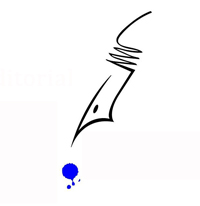
The second suite is the most lightly scored of the four. Written for a single flute, strings and harpsichord continuo, some people have considered it a solo flute piece, much like a concerto, and, in order to balance the solo flute, have performed the work with only solo strings in the orchestra. However, the writing, particularly in the overture, is just as full and the character just as weighty as in the other suites, and it does not suggest an exceptionally light sonority. Using multiple violins need not bury the sound of the flute, but the two can be blended into a richer sonority, especially with the sound of the wooden flute and the gut strings of Baroque instruments. On this recording, where the flute simply doubles the violins in much of the overture, we use the larger string ensemble, but where there is a solo passage for flute, we reduce the accompaniment to solo strings. Thus there is a lively alternation of solos and tutti in the orchestra for the overture, as well as in certain other movements of the suite. Of the other movements, the Sarabande is highly unusual in that the bass line imitates the violins and flute in a canon at the fifth throughout the movement. It is the kind of intellectual play that Bach enjoyed, but it is worked out so gracefully and is so unexpected in a dance movement of this kind that it is easy to miss. Here the inner voices of the second violins and violas need to be light enough that the canon in the outer voices is heard, while at the same time providing their own interesting counterpoint. Through all this contrapuntal play we must feel the slow, underlying pulse of the dance, the Sarabande. In the Polonaise, the flute first plays the tune as part of the orchestra. Then in a variation, it plays soloistic figuration, while the bass line repeats the original tune. The suite ends not with a dance but with a character piece, the Badinerie. The title is related to the Badinage (“banter” or “playfulness”), which one finds occasionally in suites by other composers. In recent times, this movement has become popular as a lightning-fast virtuoso show-piece for flutists. But while it is a quick piece, it still can suggest some of the character of a dance, beginning phrases in the middle of the bar, almost like a fast gavotte.
–From Martin Pearlman’s Boston Baroque’s Program Notes for a Dec. 31, 2022 and Jan. 1, 2023 concert.








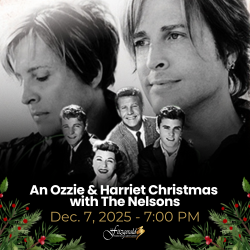
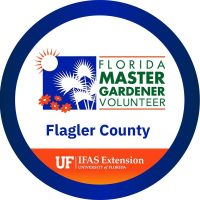
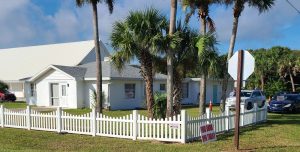
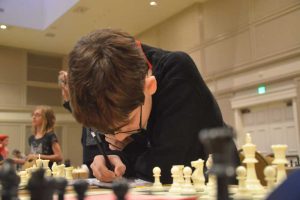
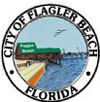
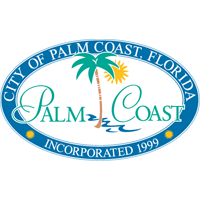

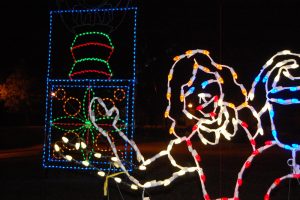

























Laurel says
Trump told Hegseth “to provide all necessary Troops to protect War ravaged Portland” and, “I am also authorizing Full Force.”
“War ravaged Portland.” Can we get back to planet Earth and get over this crazy assed crap? Trump has pulled the plug on our country, and it’s swirling down around the drain.
So, “Conservative Christians,” please enlighten this person, who is not a Christian, where does your savior, Jesus, preach power through strength? I can’t seem to find it. This should be easy for you to explain. Is there a quote somewhere? Please quote for me.
Pogo says
@In the Age of Trump
…the River of Sorrow overflows again, on its way to the Sea of Despair…
Thoughts and prayers:
U.S. Pulls Plug on Haiti’s Last Big Industry
https://www.msn.com/en-us/money/markets/u-s-pulls-plug-on-haiti-s-last-big-industry/ar-AA1NER2q?ocid=nl_article_link
Pogo says
@A nation shackled
…and Trump has the only key.
What is NSPM-7? Over 3,000 nonprofits sound alarm on new Trump directive
Andrew Stanton
“More than 3,000 nonprofit organizations from across the country have signed onto an open letter first shared with Newsweek rebuking President Donald Trump’s directive targeting groups accused of supporting “organized political violence.”
Why It Matters
The White House last week issued NSPM-7, a missive titled “Countering Domestic Terrorism and Organized Political Violence,” which orders his administration to investigate groups it suspects promote political violence. Critics have raised concerns about whether the directive could be meant to chill the First Amendment’s guaranteed right to free speech as Trump has accused the left of provoking violence…”
https://www.msn.com/en-us/news/politics/what-is-nspm-7-over-3-000-nonprofits-sound-alarm-on-new-trump-directive/ar-AA1NCOBZ?ocid=nl_article_link
Bring on the meat hooks and piano wire…
https://www.google.com/search?q=hitler+meat+hooks+piano+wire
Skibum says
Yes, it is laughable, Laurel. Moving here from the Pacific Northwest, I know a whole lot about Portland because that city and the Oregon Coast was one of our favorite weekend getaways when living in WA State east of Seattle. Both Seattle and Portland have been bad mouthed incessantly by the idiot in the WH, like they are war torn cities in the Middle East… ridiculous!
We love going to the huge weekend farmer’s market in Portland, having a leisure breakfast at one of the many excellent restaurants along the waterfront, maybe taking the light rail into the city center to explore some of the museums and art galleries. I have gone back there since moving here to this very dangerous state, and I have to tell everyone, Portland and the State of Oregon is so much safer for residents and tourists alike than nearly anywhere here in Florida, that is the God’s honest truth!
What drumph is doing, is so transparent – at least to me. He denies states and cities he doesn’t like with the congressionally approved public safety funds they are entitled to because they didn’t vote for him. He publicly denigrates them, then when public safety is jeopardized because of a lack of federal $$$ to hire more cops, he threatens to send in federal troops. He wants a race riot to start so he can declare Martial Law in these states and suspend elections! That is his ultimate goal.
Kennan says
War ravaged Portland.
Funny how MUM the Trumpasphere is over Michigan, Louisiana, Texas and others this year.
This is the floor flushing piece of excrement you voted for.
Good luck . Your time will come.
Ed P says
Laurel,
I’m not a Bible thumper nor any type of authority on the interpretation of any Bible verses but I think there are multiple references of peace through strength. Not used for aggression but for defense. Worded differently than peace through strength , but with a similar meaning.
Psalm 18:32-34
“It is God who arms me with strength and keeps my way secure. He makes my feet like the feet of a deer…He trains my hands for battle; my arms can bend a bow of bronze.”
Psalm 29:11
“The lord gives strength to His people; the lord blesses His people with peace.”
The connection is strength precedes and enables peace. Ie God empowers His people so they can live in peace.
Ecclesiastical 3:8
“A time to love and a time to hate, a time for war and a time for peace.” ( remember the Byrds’ song Turn Turn Turn)
Romans 13:4
“For the one in authority is God’s servant for your good. But if you do wrong, be afraid, for rulers do not bear the sword for no reason.”
Two caveats. First you have to believe peace is not passive. Second, the Bible warns against relying solely on human or military strength instead of trusting God.
Not sure what that has to do with Antifa and Ice in Portland, but you asked.
Laurel says
Trump is like the devil incarnate. He spreads trash and misery and hopelessness where ever he turns, only promoting those he feels worthwhile to himself personally.
Ray W. says
Hello Pogo:
A new Marist poll, conducted in affiliation with NPR and PBS News, surveyed 1,477 U.S. adults from Sept. 22 to Sept. 26, 2025, with a polling error of 3.1%, and another 1,329 registered voters, with a polling error of 3.3%, reveals that between the last such poll in April 2024 and this poll the percentage of Americans who express a belief that people may have to resort to political violence in order to restore America to its proper path has risen from 19% to 30%. The major change occurred among Democrats, whose belief rose from 16% to 28%, still below that percentage expressed by Republicans.
The question asked by the pollsters was straightforward:
“Do you agree that Americans may have to resort to violence in order to get the country back on track?”
Said Lee Maringoff, director of Marist University Institute for Public Opinion:
“‘We’ve had an erosion in a lot of norms and rules, and in our institutions’ that has accelerated in the last year. … The cloud over all this remains the excessive polarization on a lot of issues. So the country is more divided. Our temperature is now well above normal. We’re breaking a pretty high fever right now.”
Said Cynthia Miller-Idriss, American University professor and a founding director of Polarization and Extremism Research and Innovation Lab(PERIL):
“It’s a horrific moment to see that people honestly believe that there’s no other alternative at this point than to resort to political violence. … One of the things you really want to see right now is universal condemnation of the use of violence and deescalation of rhetoric.”
Make of this what you will.
Me?
It might be necessary for me to apologize to all FlaglerLive readers.
I recently suggested the possibility that the murder of Charlie Kirk might foster a lessening of political violence. There exists a measure of evidence to support the argument that I am wrong in my expression of that hope.
In this statement I channeled Churchill’s famous quote, given during a speech just after a British victory over an Axis army in North Africa in late 1942:
“This is not the end. It is not even the beginning of the end. But it is, perhaps, the end of the beginning.”
We as a people may still be in the beginning of a wave of political violence that will last for decades.
We may not, as I had hoped, be reaching the end of that beginning wave of political violence, which is a situation separate and apart from being near the beginning of a final wave of political violence.
It might be quite a long time before the best among us will be willing to seek election to political leadership positions. Until that time comes, we are quite likely to see the least qualified among us willing to seek political leadership positions.
As an aside, some 75% of survey respondents said that politically motivated violence is a “major” problem. 18% said it was a minor problem. 4% said it was no problem at all.
And 75% of self-identified Republicans said they opposed political violence against public officials, whereas 70% of Democrats said the same.
Professor Miller-Idriss said:
“Americans ‘do not want to see rising political violence be used as an opportunity for political leaders of any platform, of any party, to suppress freedom of speech, to attack individuals for their ideas when those ideas are protected free speech in this country, because that is a slippery slope to authoritarianism.'”
Hope springs eternal.
Skibum says
Ed P, if you are looking for essential quotes from the Bible, how about these:
Then he (Jesus) will answer them, saying, ‘Truly, I say to you, as you did not do it to one of the least of these, you did not do it to me.’ Matthew 25:45
Little children, let us not love in word or talk but in deed and in truth. 1 John 3:18
Your fallacy that there can only be “peace through strength” is blown completely out of the water when you realize that God’s commandment is for humanity not to talk the walk, but to walk the talk… to SHOW how people should be treated and to treat others as you would like to be treated yourself.
Something the current occupier of the WH knows NOTHING about.
Pogo says
@Ray W
Thank you for your thoughtful, thought-provoking remarks; including, “…“Do you agree that Americans may have to resort to violence in order to get the country back on track?”…”
I put it to you: is that a leading question, and/or push polling? I stipulate I have no means of knowing. Furthermore, I wonder what response this question would elicit: “Do you agree that Americans may have to endure increasing violence, without retaliation, in order to get the country back on track?”
I’m in very substantial agreement with your writing on these matters. Bluntly, my solace is that I’m old and ill and nature will excuse me from the witness stand long before the ultimate travails come to pass. I honestly have small hope for mankind’s future, but will never be disappointed to eat those words.
Please pardon the latency of communicating a response.
Ed P says
Skibum,
So “lob” a few golden rules Putin’s direction.
Problem solved.
Ray W. says
Hello Skibum:
Good question.
As I see it, I don’t know how long that survey question has been asked. One cannot compare survey responses over time if one repeatedly changes the language of the survey question. For all I know the question has been asked for decades. From the article I utilized, the question had last been asked in April 2024. “Improving” a suggestive or leading survey question could make the new question useless.
Laurel says
Ed P: I accept that you are not a Bible thumper. I asked about Jesus specifically. I think that “strength” may be attributed to strength of spirit, and that “vengeance be mine” is God’s way of saying one should leave retribution to God. As for multiple Bible quotes, I know that the Emperor Justinian didn’t want to reincarnate as a pauper, and lose his great power, so he took reincarnation out of the Bible. The Bible has been changed over time to suit some of those in power. Interpretation seems to be subjective. So, again, not necessarily the words of Jesus, who seems to be clearer in intention.
Even though I am not a Christian, and want nothing to do with any organized religion, still, I am offended by those who call themselves Christians and attack innocent people as “vermin.” Just wearing a cross around one’s neck, or a flag on one’s lapel, means nothing to me. If fact, it makes me suspicious of the wearer.
But, I do appreciate that you made the effort to answer. Most don’t, and I think I may know the reason why.